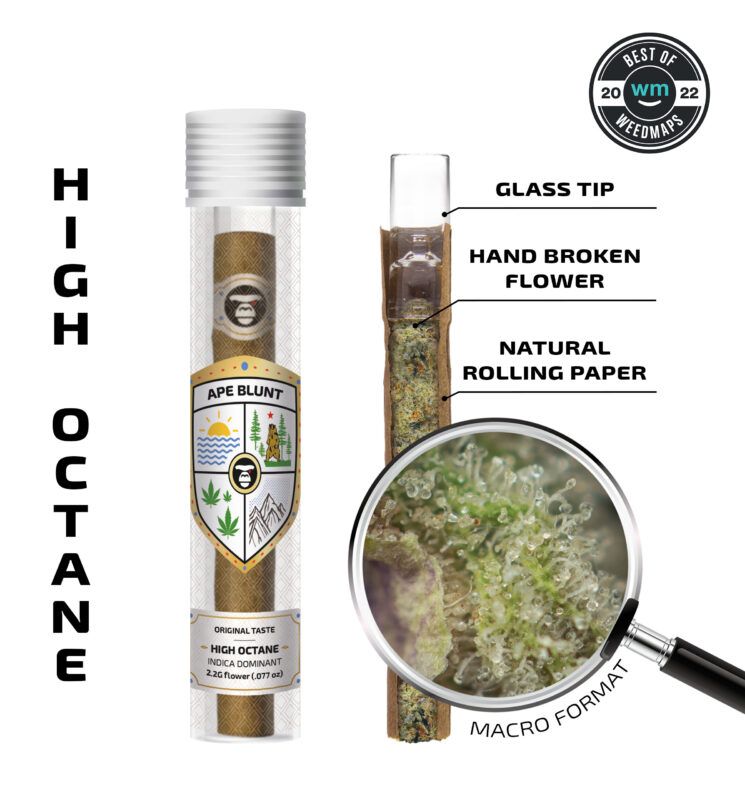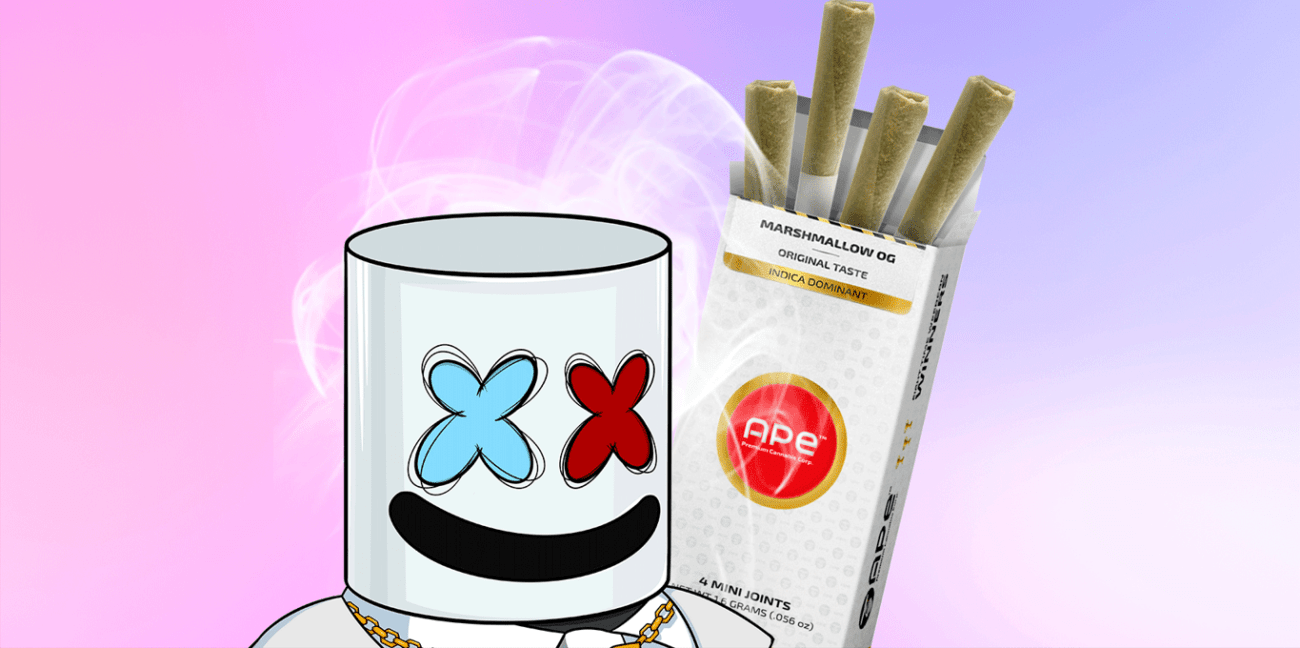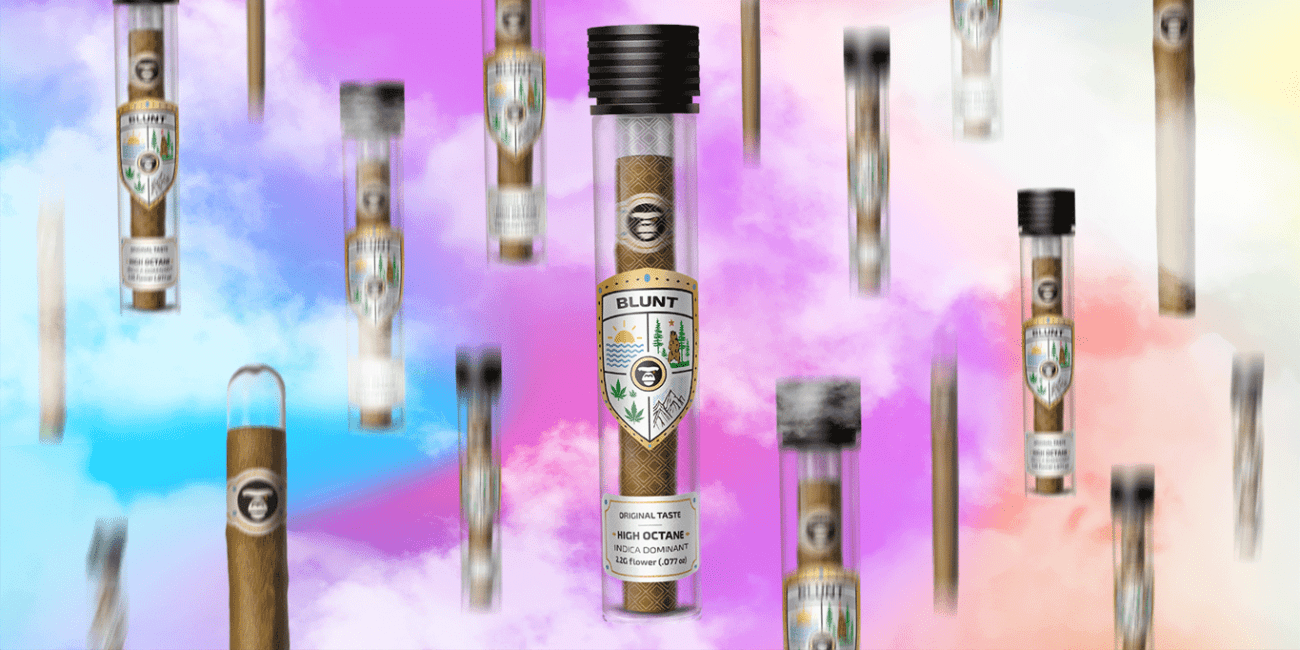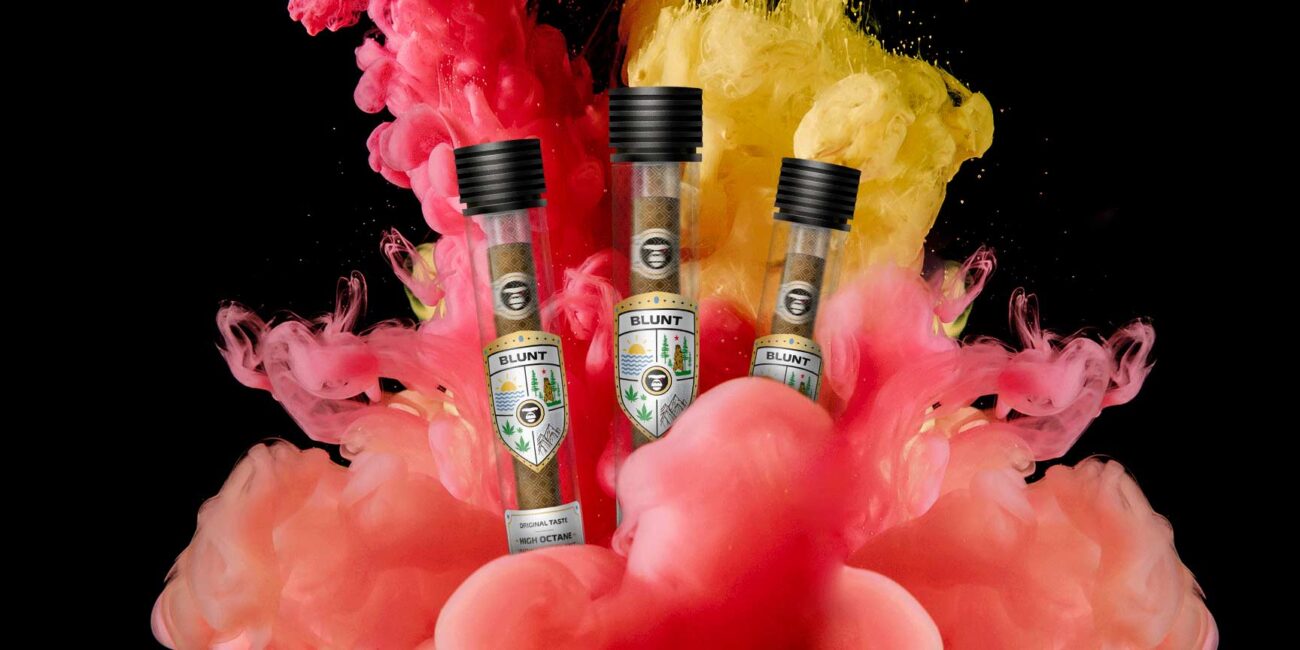Blunts vs Joints — what’s the difference between prerolls

Blunts and joints — are two popular methods of smoking cannabis. And each offers a unique smoking experience. Understanding the key differences between the two can help to make an informed decision about which smoking style suits you best.
Some key differences between the two can affect the smoking experience. In this article, we’ll look at the differences between blunts and joints, including their composition, effects, and history. Let’s try to understand the subject of blunt versus joint.
What is a Blunt?
A blunt is a cannabis cigarette that is made by rolling ground cannabis into a tobacco leaf wrapper. The tobacco leaf wrapper is typically taken from a cigar, emptied of its original tobacco filling, and then filled with cannabis. Blunt is usually made out of cigar paper or blunt wrappers. It is thicker and heavier than rolling paper.
Blunts are known for their larger size and slow-burning nature, which can make them ideal for group smoking sessions, for example. And it often comes in cones or prerolled tubes. Blunts may be full of pure marijuana or a combination of cannabis and tobacco.
What is a Joint?
A joint is a small cannabis cigarette usually made from ground cannabis rolled by hand into roll paper. A joint is traditionally made from thin, porous paper and is supposed to burn slowly. The rolling paper is typically made from hemp, rice, or wood pulp, and comes in a variety of sizes and flavors. Unlike blunts, joints do not contain any tobacco.
Blunt vs Joint: Composition
The primary difference between blunts and joints is their composition. As mentioned above, blunts contain tobacco, while joints do not. This means that blunts not only contain cannabis.
As well as the nicotine and other chemicals found in tobacco. This can affect the smoking experience. As a consequence, this can make blunts more addictive than joints.
Blunt vs Joint: Effects
Because blunts contain tobacco, they can have a slightly different effect than joints. The nicotine in the tobacco can produce a head rush or buzz that is not present when smoking a joint.
Additionally, because blunts are typically larger than joints, they may produce a more intense high due to the larger volume of cannabis being smoked.
Tobacco Flavor vs Pure Cannabis Essence
The choice between a blunt and a joint also affects the flavor profile of your cannabis experience. Blunts, wrapped in tobacco leaf papers, introduce a subtle infusion of tobacco flavor to your preferred strain.
For some enthusiasts, this amalgamation adds an intriguing complexity to the overall taste. However, others argue that it distracts from the pure essence of the flower itself.
In contrast, joints rolled with thin paper, akin to cigarette paper, primarily deliver the untainted flavor of the chosen strain. Though flavored rolling papers exist as exceptions, a joint typically preserves the unadulterated aroma and taste of cannabis.
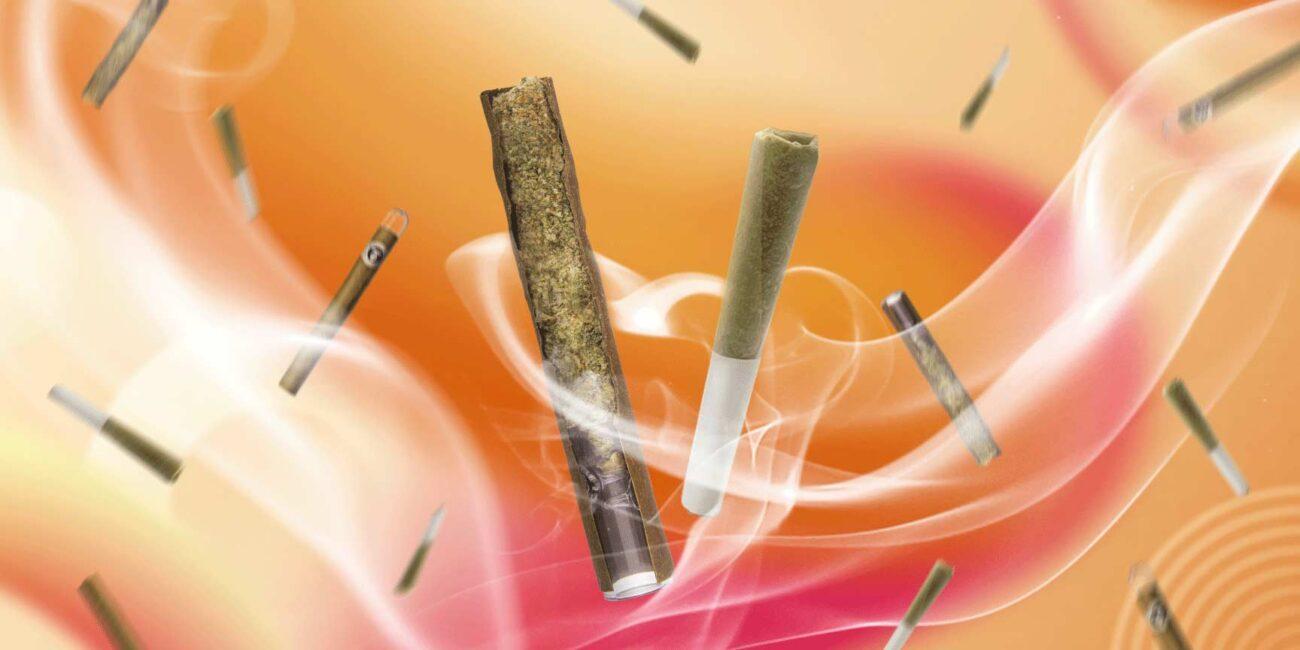
An Unexpected Kick
One fascinating aspect that sets blunts apart from joints is the presence of nicotine. Since blunt wraps are crafted from tobacco leaf paper, they inherently contain trace amounts of nicotine.
This infusion of nicotine adds an unexpected kick to the high, subtly altering the experience for those who indulge in blunts.
It’s important to note that this additional element may influence the overall effect and should be taken into consideration based on individual preferences and tolerance levels.
Burn Rate and Relaxation
The burn characteristics of blunts and joints contribute to the overall smoking experience. Joints, being rolled with thinner and more delicate papers, tend to burn at a faster pace, often resulting in a quick session.
On the contrary, blunts are known for their slow and steady burn, providing an extended period of relaxation and enjoyment. The leisurely burn of a well-crafted blunt allows smokers to savor each moment and fully immerse themselves in the experience.
Difference Size between blunt and joint
One notable advantage of blunts over joints lies in their capacity to hold a larger amount of flower. While a typical joint may contain around a third of a gram of bud, a well-constructed blunt can accommodate a substantial 1 to 2,5 grams.
This makes blunts particularly appealing for social gatherings, where friends can partake in a shared experience, passing around a generously packed blunt.
Blunt vs joint:Pros and Cons
For cannabis connoisseurs who prefer soft, clean smoking – Joints are one of the favorite ways. They are also a healthier option than blunts because they tobacco-free. While joints are more discreet as opposed to blunts and are easier to roll.
In turn, Blunts are more appreciated by those who like a more strong smoke and a potent nicotine effect. They are also more long-lasting and can hold more marijuana than joints.
History of blunts and joints
The history of blunts and joints is intertwined with the long-standing cultural and social relationship humans have had with cannabis. Let’s delve into the intriguing origins and evolution of these popular methods of consuming cannabis.
Joints: A Timeless Classic

The joint, a cannabis cigarette, holds a special place in cannabis culture. Its history can be traced back to the early 20th century, primarily associated with the Jazz Age and the emergence of counterculture movements.
It gained popularity among artists, musicians, and bohemian communities who embraced cannabis as a source of inspiration and relaxation.
The term “joint” itself originated from the practice of rolling marijuana into a thin paper, similar to how tobacco was rolled into cigarettes. Joints allowed for a convenient and discreet way of consuming cannabis, making it a symbol of rebellion and freedom of expression.
Blunts: An Unexpected Twist

The history of blunts takes us on a journey through the fusion of cannabis and tobacco cultures. Blunts, unlike joints, are wrapped in tobacco leaf papers instead of traditional rolling papers.
This unique combination brings together two plant-based substances, creating a distinctive smoking experience.
Blunts can be traced back to the 1980s hip-hop scene in New York City. It is believed that the term “blunt” originated from the Phillies Blunt brand, which manufactured tobacco cigars that were often emptied of their original content and filled with cannabis.
This practice gained popularity in urban communities, particularly within the hip-hop community, and soon spread to other parts of the world.
Conclusion
In conclusion, while blunts and joints may seem similar at first glance, they are actually quite different in terms of their composition, effects, and history.
Blunts offer a larger capacity, a touch of tobacco flavor, an unexpected nicotine kick, and a leisurely burn, joints provide a pure taste and a quicker session.
Whether you prefer the slow-burning nature of a blunt or the pure cannabis taste of a joint is a matter of personal preference. Just be sure to choose the method that works best for you and always smoke responsibly.



